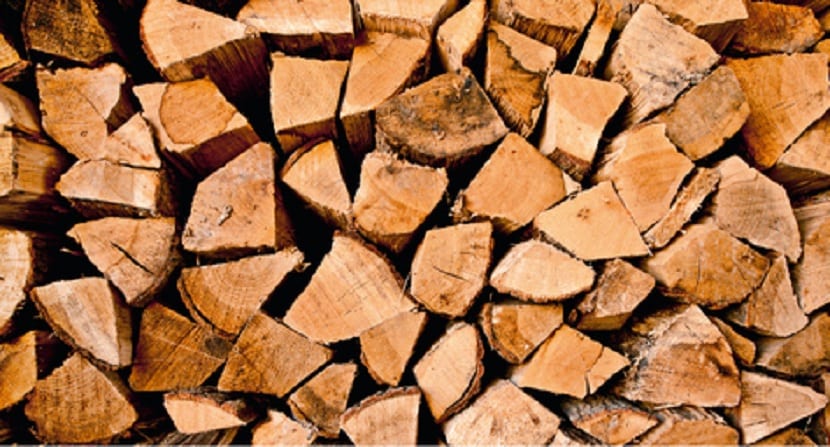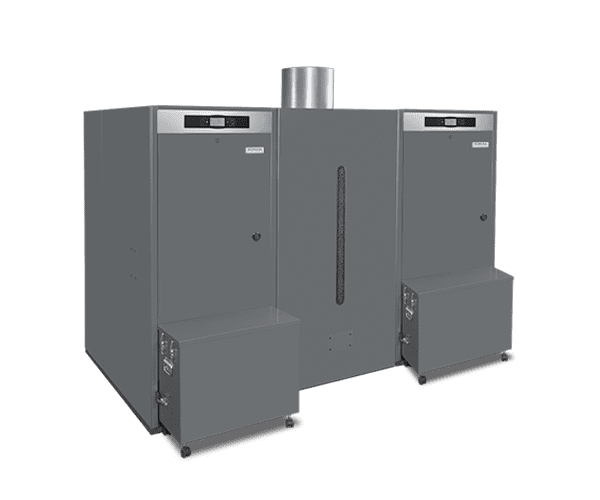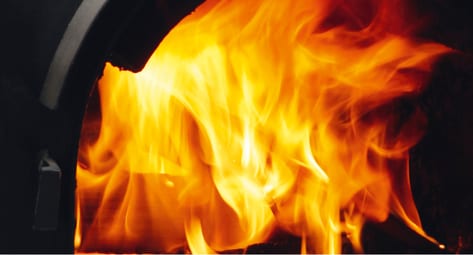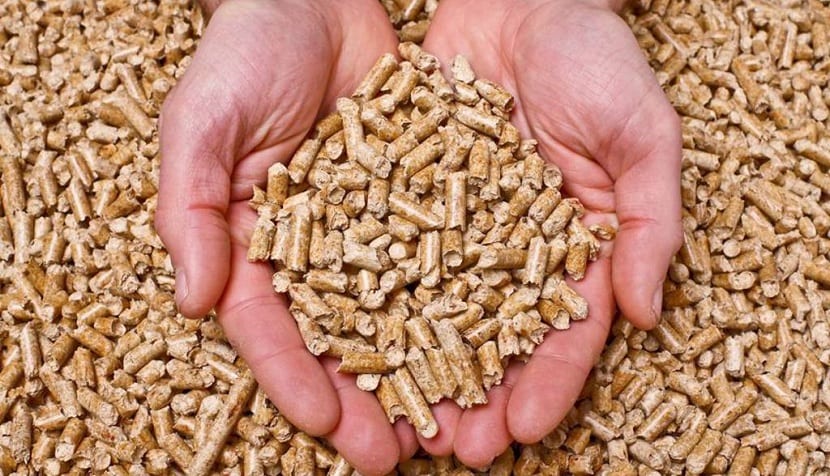
In the previous post we talked about biomass energy . From what it is, how it works and where it comes from to its advantages and disadvantages. I made a small mention of biomass boilers, but I did not go into detail since I want to expose it here in more detail.
In this post we are going to talk about the different biomass boilers and the controversy of the CO2 balance that exists with biomass energy.
What are biomass boilers?
Biomass boilers are used as a source of biomass energy and for the generation of heat in homes and buildings. They use natural fuels such as wood pellets, olive pits, forest residues, dried fruit shells, etc. as a source of energy. They are also used to heat water in homes and buildings.
The operation is similar to that of any other boiler. These boilers burn the fuel and generate a flame horizontal that enters a water circuit and the heat exchanger, thereby obtaining hot water for the system. To optimize the use of the boiler and organic resources such as fuels, an accumulator can be installed that stores the heat produced in a similar way to how solar panels do.

Source: https://www.caloryfrio.com/calefaccion/calderas/calderas-de-biomasa-ventajas-y-funcionamiento.html
In order to store the organic waste that will be used as fuel, the boilers need a container for storage. From that container, by means of an endless screw or suction feeder, it takes it to the boiler, where the combustion takes place. This combustion generates ashes that must be emptied several times a year and accumulate in an ashtray.
Types of biomass boilers
When choosing what type of biomass boilers we are going to buy and use, we have to analyze the storage system and the transport and handling system. Some boilers allow burning more than one type of fuel, while others (such as pellet boilers) They only allow one type of fuel to burn.
Boilers that allow more than one fuel to be burned require greater storage capacity as they are larger and more powerful. These are normally intended for industrial uses.
On the other hand, we find the pellet boilers that are the most common for medium powers and that are used for heating and sanitary hot water through accumulators in homes of up to 500 m2.

There are some biomass boilers that work with a efficiency close to 105% which means a fuel saving of 12%. We also have to take into account that the design of the boilers depends to a great extent on the humidity of the fuel that we want to use.
- Boilers for dry fuels. These boilers have a low thermal inertia and are normally prepared to maintain an intense flame. Inside the boiler temperatures so high can be reached that they are able to crystallize the slag.
- Boilers for wet fuels. This boiler, unlike the previous one, has a great thermal inertia to be able to burn the wet fuel. The design of the boiler must allow the fuel to dry sufficiently so that gasification and oxidation are complete and no black smoke is produced.
Pellet boilers-olive pits
There is a great variety of biomass boilers that use pellets as fuel. Among all of them we find:
Modular pellet biomass boiler
It is used for installations with powers between 91kW and 132kW and that use pine pellets as fuel. This modular boiler is prepared for cascade operation. It includes the reserve tank, the compressor ashtray and a suction system for the transport of pellets. It also generates great savings since it manages to reduce fuel consumption by lowering the temperature of the combustion gases. Get returns of up to 95%. It also has a fully automatic cleaning system. It has a set of turbulators that, in addition to retaining the passage of fumes, in order to improve performance, are responsible for cleaning ash remains in the smoke passages.

Source: http://www.domusateknik.com/
The burner has an automatic ash cleaning system. The lower part of the combustion body of the burner has a cleaning system that periodically sends the ashes that are generated in the combustion to the ashtray. Cleaning is carried out even with the burner running, which makes it possible not to alter the comfort of the installation and to reduce the consumption of the boiler.
Wood boilers
On the other hand, we find biomass boilers whose fuel is firewood. Among them we find:
High efficiency gasification boiler
These are reverse flame gasification boilers for firewood logs. They usually have a range of three powers between 20, 30 and 40 kW.
The advantages of this type of boiler are:
- High energy efficiency that reduces fuel consumption. The efficiency obtained is 92%, which exceeds the 80% required by the installation regulations.
- Charging autonomy of up to seven hours.
- It adjusts the power generated to the demand thanks to its electronic modulation system.
- It incorporates a safety system against overheating.

Source: http://www.domusateknik.com/
Advantages of having a biomass boiler
The first most notable advantage is certainly the price of biomass. Normally, its price is very stable because it does not depend on international markets as fossil fuels do. We also mention that it is quite cheap energy since it is generated from local resources so it does not have transportation costs. Being quite profitable and competitive, it provides economic comfort to the user.
The second notable advantage is that it is a safe and advanced technology. That is, its maintenance is simple and its efficiency is high. The pellet is a natural fuel that, due to its high calorific value, makes, in a renewable and profitable way, it provides the boiler with yields close to 90%.

Finally, the clearest advantage is that it uses clean and inexhaustible energy as it is renewable. During its use it emits CO2 since it burns fossil fuel, but this CO2 is neutral because during its growth and development, the raw material has absorbed CO2 during photosynthesis. This is today the center of a controversy in the use and contamination of biomass energy that we will see later. In addition, we have the advantage that by extracting the forest biomass it helps to clean the mountains and prevent fires.
It should be mentioned that biomass is a source of employment in rural areas and that it is respectful of caring for the environment.
Disadvantages of biomass boilers
Biomass boilers have a lower calorific value if we compare it with fossil fuels. Pellets have half the calorific power of diesel. Therefore, we will need twice as much fuel to have the same energy as with diesel.
Because fuels such as pellets are low in density, a large space is needed for storage. Normally, boilers need a silo to store the fuel nearby.
Controversy of the CO2 balance in biomass energy
As we know, in order to use biomass energy, we must burn fuel. During the burning of the fuel, we are emitting CO2 into the atmosphere. So how is biomass energy different from fossil fuels?
During the growth and development of the raw material that we use to burn, plants, pruning remains, agricultural remains, etc. They have been absorbing CO2 from the atmosphere through photosynthesis. This makes the CO2 balance of biomass energy considered neutral. In other words, the amount of CO2 that we emit into the atmosphere by burning natural fuels has previously been absorbed by plants during their growth, so it can be said that total emissions into the atmosphere are zero.
However, it seems that this is not entirely the case. Unlike fossil fuels, the CO2 emitted by burning biomass fuel, comes from a carbon that was previously removed from the atmosphere in the same biological cycle. Therefore, they do not alter the balance of CO2 in the atmosphere and do not increase the greenhouse effect.

In the combustion of any type of fuel, numerous combustion product elements can be generated, among which nitrogen (N2), carbon dioxide (CO2), water vapor (H2O), oxygen (O2 not used in the combustion), carbon monoxide (CO), nitrogen oxides (NOx), sulfur dioxide (SO2), unburned (unburned fuel), soot and solid particles. However, in burning biomass, only CO2 and water are obtained.
What happens then with this controversial CO2 balance? Indeed, CO2 is produced as a result of the combustion of biomass, but this is considered a zero balance because it is stated that biomass combustion does not contribute to the increase in the greenhouse effect. This is because the CO2 that is released is part of the current atmosphere (it is the CO2 that plants and trees continuously absorb and release for their growth) and is not the CO2 captured in the subsoil over thousands of years and released in a short space of time like fossil fuels.
In addition, it must be taken into account that the use of biomass energy saves a lot in the transport of fuel which, in turn, emits more amounts of CO2 into the atmosphere and modifies the environmental balance.
As you can see, after the two posts on biomass, which is a renewable energy source, which although not so well known, does contribute to improving the care of the environment and is an energy option for the future.
which would be the most suitable power to replace diesel boiler with biomass considering the space occupied by the biomass and automatic feeding mode of the boiler